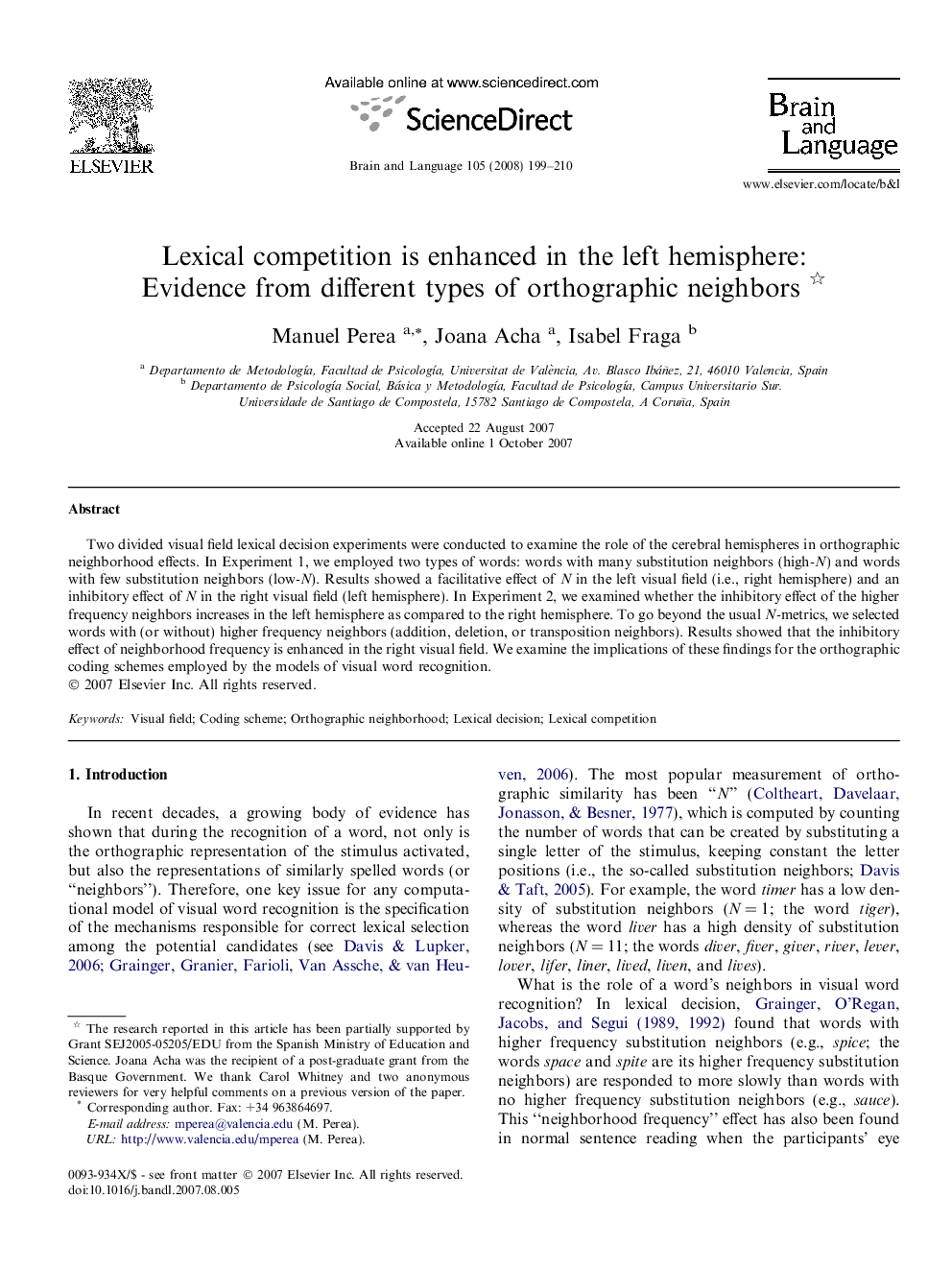| Article ID | Journal | Published Year | Pages | File Type |
|---|---|---|---|---|
| 926027 | Brain and Language | 2008 | 12 Pages |
Two divided visual field lexical decision experiments were conducted to examine the role of the cerebral hemispheres in orthographic neighborhood effects. In Experiment 1, we employed two types of words: words with many substitution neighbors (high-N) and words with few substitution neighbors (low-N). Results showed a facilitative effect of N in the left visual field (i.e., right hemisphere) and an inhibitory effect of N in the right visual field (left hemisphere). In Experiment 2, we examined whether the inhibitory effect of the higher frequency neighbors increases in the left hemisphere as compared to the right hemisphere. To go beyond the usual N-metrics, we selected words with (or without) higher frequency neighbors (addition, deletion, or transposition neighbors). Results showed that the inhibitory effect of neighborhood frequency is enhanced in the right visual field. We examine the implications of these findings for the orthographic coding schemes employed by the models of visual word recognition.
